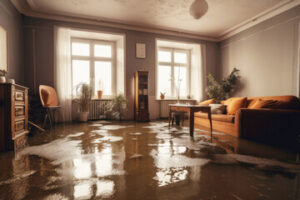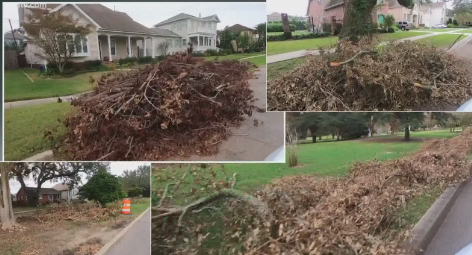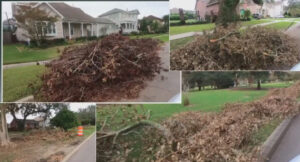Water Restoration is a time-sensitive process that restores your home to its previous condition following an emergency such as a burst pipe, sewer backup, or flooding. Look for a professional company with IICRC certification!
Remediation involves a thorough inspection and assessment using tools like hygrometers. This allows professionals to identify the type and severity of the damage. Visit Website to learn more.
When you hire an IICRC certified company to handle your water restoration, you can rest assured that they are extremely knowledgeable and professional. This is because IICRC certification is a rigorous process that requires technicians to attend training classes and pass an exam. These courses are extensive, often running over several days and including both classroom and hands-on learning. IICRC also expects its certified firms to maintain a high level of integrity and excellence in their work.
IICRC certification gives professionals an instant boost of credibility within the inspection, cleaning and restoration industry. Moreover, it offers a recognizable mark of professionalism and trustworthiness, making them more likely to be hired by insurance providers and customers. This is especially important in the aftermath of a disaster when time is of the essence.
Choosing a professional who is IICRC certified ensures that your property will be restored correctly and quickly. They will follow strict standards and use advanced equipment to minimize damage and ensure your home is dry. Additionally, they will be able to advise you on how to prevent future problems such as mold growth or structural issues.
In addition, IICRC professionals are trained to identify hidden damages that may not be immediately evident. This allows them to create a comprehensive restoration plan that is customized to meet your unique needs. They will also be able to utilize drying techniques that are effective and efficient, saving you both time and money.
Another benefit of choosing an IICRC-certified contractor is that they can provide you with valuable information about your insurance coverage and assist you in filing a claim. This is particularly important in the aftermath of a disaster, when you are already stressed and anxious.
Lastly, IICRC-certified contractors are trained to communicate with homeowners throughout the restoration process. This ensures that all of your questions and concerns are addressed promptly and thoroughly. Furthermore, they will keep you updated throughout the process so that you can make informed decisions about how to proceed. This will help reduce stress and ensure a successful restoration project.
Eco-Friendly Cleaning & Drying
One of the most important things to do after a water damage emergency is to get the affected area dry as quickly as possible. This can be done by removing as much moisture from the area as possible and sanitizing any affected surfaces. This can be accomplished with air movers, dehumidifiers, fans and other tools that help eliminate excess moisture. If this is not done quickly mildew, mold and other hazardous materials may begin to grow, and structural damage and safety risks will increase significantly.
The key to this is identifying the type of water that has caused the issue and using the proper tools to handle it. There are three types of water that can be found in a home after flooding: Clean Water: This is typically rainwater or leaking pipes and does not contain harmful chemicals or bacteria. Gray Water: This is water leaking from appliances such as washing machines or dishwashers and is generally slightly contaminated. This can be cleaned by hand or with a mop and bucket. Black Water: This is sewage or stormwater and contains dangerous and harmful chemicals. This can be a serious health risk and requires professional cleaning and disposal.
When choosing a green dry cleaner, look for one that uses non-toxic and biodegradable cleaning agents for spotless clothing without environmental compromise. They should also have energy-efficient equipment that minimizes electricity consumption and demonstrates a commitment to sustainability. In addition, choose a dry cleaner that utilizes reusable garment bags and recyclable packaging materials to reduce waste.
Finally, look for a dry cleaner that is committed to continued research and development of environmentally focused products. This is an indication that they are invested in the future of our planet and want to keep up with the latest technology to improve the environmental impact of their business practices.
Beware of companies that claim to be eco-friendly but do not provide evidence of their methods. A reputable and sustainable company will be proud to share their process with you and explain the benefits of their methods over traditional alternatives.
Save Your Belongings
In the past, homeowners facing water damage had to round up all their belongings and throw them away in fear of mildew and mold. Today, however, professional water restoration specialists have tools and techniques for restoring items that can be saved from deterioration. These methods include sanitizing, deodorizing and drying floors, walls, furniture and other personal belongings. This process can also help restore structural elements of your home, which were not affected by the flood but are often overlooked in the clean up.
Prioritize safety: Make sure to wear protective gear and a face mask when handling any electronics or other materials that may be affected by water. It is important to remove any electrical appliances from the area to prevent shocks and fires.
Begin the cleanup: The more you can do to speed up the water damage restoration process, the more your belongings will be able to be saved. Start by mopping up any excess moisture, then move furniture to allow air circulation and dry the wood surfaces underneath. Remove colored rugs from wet carpeting and wipe down any wooden furniture legs with aluminum foil or wood blocks to prevent corrosion. If necessary, turn on air conditioning to facilitate faster drying.
Find a reputable restoration company: Look for an IICRC-certified team of experts that uses industry-leading equipment, utilizing the latest techniques and technologies to provide you with the best service possible. If possible, find out if any previous clients are willing to act as references. Ask about the company’s pricing, response time and whether they work with insurance companies to help ease the claim process.
Mitigation and restoration: Water mitigation deals with preventing further damage to your belongings and your house, such as tarping roofs, boarding open windows and doors and more. Water restoration, on the other hand, deals with repairing and replacing any damaged or destroyed materials in your house to return it back to its original state.
The best way to save your belongings and memories during a water disaster is to act quickly and to hire a trusted restoration company. They can assist with everything from locating the shortest route to a new home to helping you file an insurance claim and getting your life back to normal as quickly as possible.
Save Money
Water damage is one of the most common issues facing Cincinnati homeowners. It could be from a burst pipe or flooding after heavy rain, and it can quickly lead to expensive repairs and a host of other problems. Fortunately, there are steps that you can take to protect your home and save money in the long run.
First, if you have any doubts about the extent of the damage, it’s always best to call in the professionals. They will be able to assess the situation and recommend a course of action. The sooner you call, the better – as time passes, damp areas will only get worse. It’s also important to turn off the power in the affected area if possible, and remove any electrical equipment. This will prevent an electrical shock or even a fire.
Moreover, the faster you call, the cheaper it will be. A professional restoration company will start the process by assessing the damage and categorizing it according to its severity. This helps determine the total cost of repair and restoration. Class 1 damage is the easiest to dry and the cheapest to remediate, while class 2 damage poses a slight health risk and costs a little more.
The last category, class 3, is the most expensive to fix and poses a significant health risk. This type of water is likely contaminated with sewage and groundwater, and it will require extensive drywall and insulation replacements.
A professional restoration company can also help you file a claim with your homeowners insurance to cover the cost of the services. It will be able to walk you through the entire process, making it easier for you to understand and compare quotes from different companies. In addition, they’ll be able to provide detailed estimates and explain what’s included in each service. This way, you can make an informed decision and choose the best option for your budget and situation.


 Debris Removal is cleaning up after a natural disaster, such as a hurricane. It involves removing large amounts of debris from an area, making it safe for people to return and begin the recovery process.
Debris Removal is cleaning up after a natural disaster, such as a hurricane. It involves removing large amounts of debris from an area, making it safe for people to return and begin the recovery process.